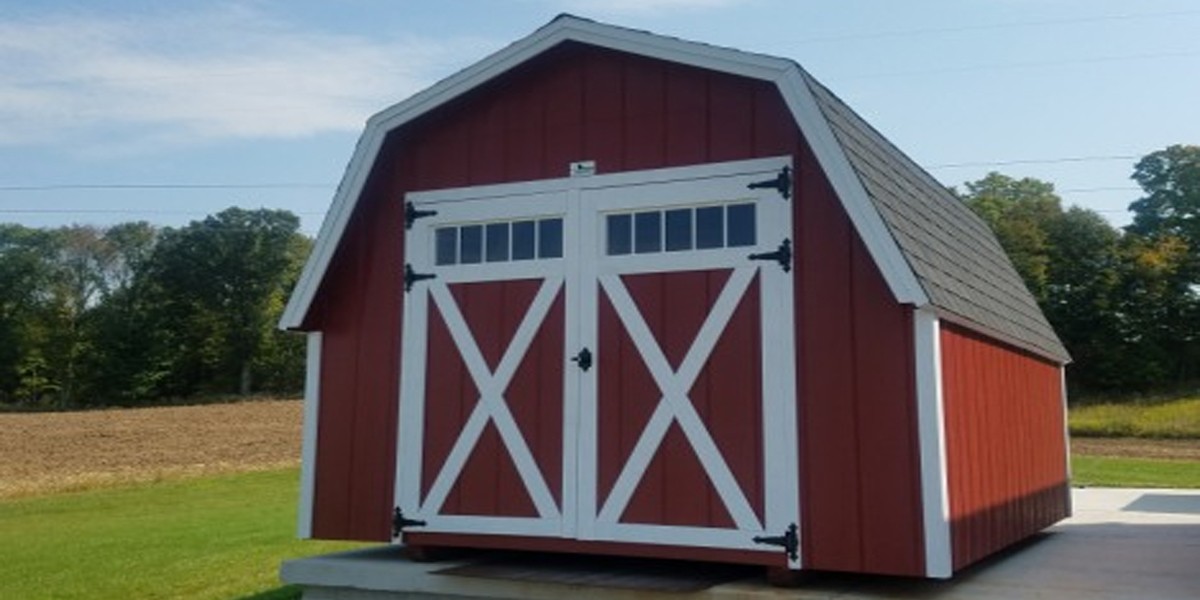Wooden barn sheds are more than just storage spaces; they’re part of the charm and utility of a property. But like every structure made from natural materials, they’re constantly tested by the weather. Sun, rain, snow, wind, and humidity all leave their mark, and over time, even the strongest wood begins to show signs of wear. Knowing how weather affects wooden barn sheds can help you maintain them better and extend their lifespan.
Let’s walk through how each weather condition plays a role and what you can do about it.
The Impact of Sun Exposure on Wooden Barn Sheds in Cedarburg
The sun can be both a friend and a foe to wood. While a bit of warmth keeps the interior dry, constant exposure to ultraviolet rays leads to fading, drying, and cracking.
Here’s what prolonged sunlight can do:
- Fading: The shed’s paint or stain starts to lose color, leaving it dull and uneven.
- Drying and Splitting: The heat pulls out natural moisture, causing boards to shrink, warp, or crack.
- Weakened Surface: Over time, dry wood becomes brittle, allowing moisture and pests to enter easily.
To protect your shed, applying a high-quality UV-resistant stain or sealant once every few years helps keep the surface strong and vibrant. Positioning the shed in a partially shaded area can also reduce direct sun exposure without trapping moisture.
How Rain and Moisture Affect Wooden Sheds
Rain is the biggest challenge for wooden structures. Wood naturally absorbs water, and when it remains damp for long periods, it starts to rot or grow mold.
Rain-related damage often includes:
- Rotting and Softening: Continuous moisture breaks down the fibers, especially near the base or roof edges.
- Mold and Mildew: These fungi thrive in damp wood and not only discolor it but also weaken its structure.
- Expansion and Warping: Wood expands when wet and shrinks as it dries, which leads to uneven panels and misaligned doors.
To prevent this, your shed must have proper drainage and elevation. Keeping it slightly above ground level prevents water from pooling around the base. Adding gutters and sloped roofing also helps direct water away.
The Role of Humidity and Temperature Fluctuations
Humidity can be tricky because it affects the shed even when it’s not raining. In humid conditions, wood expands and holds more moisture, while dry air pulls it out. Constant changes in temperature and humidity cause the wood to expand and contract, leading to small gaps and loose joints.
Common signs include:
- Sticky doors or windows due to swelling.
- Small cracks where boards meet.
- Warping or uneven surfaces over time.
Keeping your shed ventilated helps balance moisture levels. Vents or small windows that allow cross-airflow prevent humidity from trapping inside and damaging stored items.
Effects of Snow and Ice on Wooden Barn Sheds
Snow may look harmless, but the weight and melting process are tough on wooden sheds. When snow sits on the roof for long periods, it adds extra pressure, and as it melts, the water can seep into small cracks or joints.
Here’s what happens over time:
- Roof Damage: The pressure from snow can warp the roof or cause leaks.
- Freeze-Thaw Damage: When melted snow refreezes inside cracks, it expands and widens the gaps.
- Wood Rot: Constant exposure to melting snow leads to saturation in lower areas of the shed.
Regularly brushing off heavy snow and keeping your roof in good condition go a long way in avoiding these issues. Using water-resistant coatings and sealing joints before winter can also make a big difference.
The Effect of Wind on Wooden Sheds
Strong winds can loosen panels, lift roofing, or push moisture into small openings. While wind doesn’t directly damage the wood itself, it accelerates wear by carrying debris, rain, or even fine dust that grinds against the surface.
You can protect your shed by:
- Anchoring it firmly to the ground.
- Using strong fasteners and hardware for the roof and doors.
- Checking corners and joints after heavy storms for loosened parts.
A securely anchored shed not only stands firm during storms but also helps maintain the integrity of the structure over the years.
Seasonal Changes and Their Cumulative Effect
It’s not just one type of weather that causes problems—it’s the constant cycle. The transition from dry to wet, cold to hot, and sunny to cloudy puts wood under continuous stress. These shifts gradually affect the shed’s strength, appearance, and usability.
Over time, you might notice:
- Peeling paint or stain.
- Uneven panels.
- Loose nails or screws.
- Small leaks or damp spots inside.
Scheduling seasonal inspections is the simplest way to stay ahead of these issues. A quick check before winter and summer can prevent bigger problems later.
Smart Maintenance Tips to Protect Your Shed from Weather
Even though you can’t control the weather, you can minimize its impact with smart maintenance habits.
Here’s what helps:
- Seal and Stain Regularly: Refresh the exterior coating every 2–3 years.
- Check the Roof Often: Ensure shingles or panels are intact and watertight.
- Keep the Surrounding Area Clear: Trim bushes and clear debris to improve airflow.
- Elevate the Shed: A gravel or concrete foundation prevents ground moisture from seeping in.
- Ventilation is Key: Proper airflow prevents humidity buildup and protects stored items.
These small efforts not only protect your shed but also save you from costly repairs in the long run.
How Long Does a Wooden Barn Shed Last with Good Care?
With consistent maintenance and weather protection, a wooden barn shed in Kewaskum can easily last 20–30 years or more. The key lies in proactive care—catching minor issues before they turn into major damage. Every region has its own weather patterns, so understanding how your local climate behaves helps you adapt your maintenance routine accordingly.
For example:
- In rainy regions, focus more on water sealing and base protection.
- In hot climates, use UV-resistant finishes.
- In snowy areas, strengthen the roof and inspect it regularly.
Customizing your maintenance approach based on weather makes your shed stronger and more reliable.
In Conclusion:
Wooden sheds tell a story with every season they survive—the snow that tested their strength, the rain that tried to seep in, and the sun that challenged their finish. At MW Sheds, we craft barn sheds that don’t just stand through time; they stand through every test the weather throws their way. Each design, joint, and finish is chosen with one goal: to make your shed last longer, look better, and stay stronger.
When you’re ready to invest in a shed that can handle real weather, not just mild seasons, it’s time to talk to MW Sheds. Let’s build something that stays standing, season after season.
FAQs
1. How does rain damage wooden barn sheds over time?
Rain absorbs into wood, causing rot, mildew, and swelling. Without proper sealing, moisture weakens panels and creates leaks around roofing and joints.
2. Can sunlight permanently fade and crack wooden barn sheds?
Yes, ultraviolet rays slowly dry the wood, fading color, weakening fibers, and creating surface cracks that invite moisture, pests, and further damage inside.
3. Why is ventilation important for wooden barn sheds?
Ventilation prevents trapped humidity, reducing mold and wood expansion. Good airflow protects stored items and keeps interior temperatures stable year-round.
4. Does snow cause structural damage to wooden sheds?
Heavy snow adds roof pressure and melting water seeps through cracks. Freeze cycles widen gaps, leading to leaks and board warping.
5. How can I prevent weather damage on my wooden barn shed?
Seal regularly, elevate the base, improve drainage, inspect roofing, remove snow, allow ventilation, and maintain seasonally to extend the shed’s lifespan.

